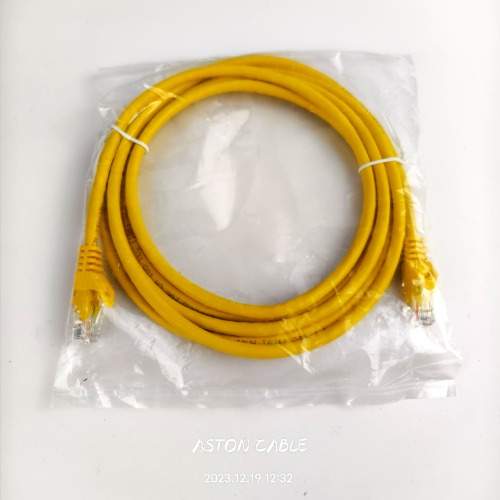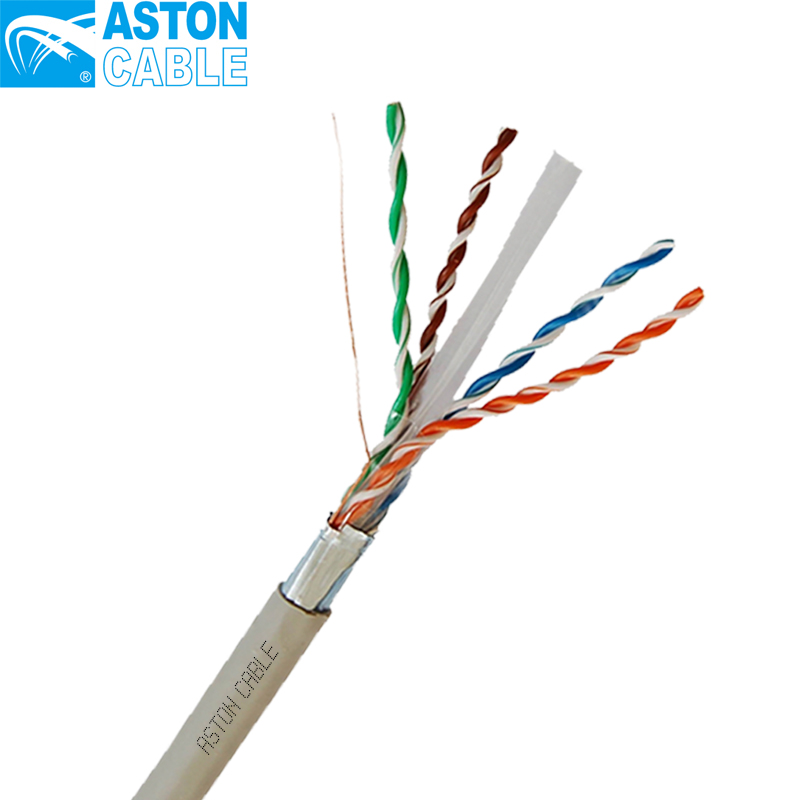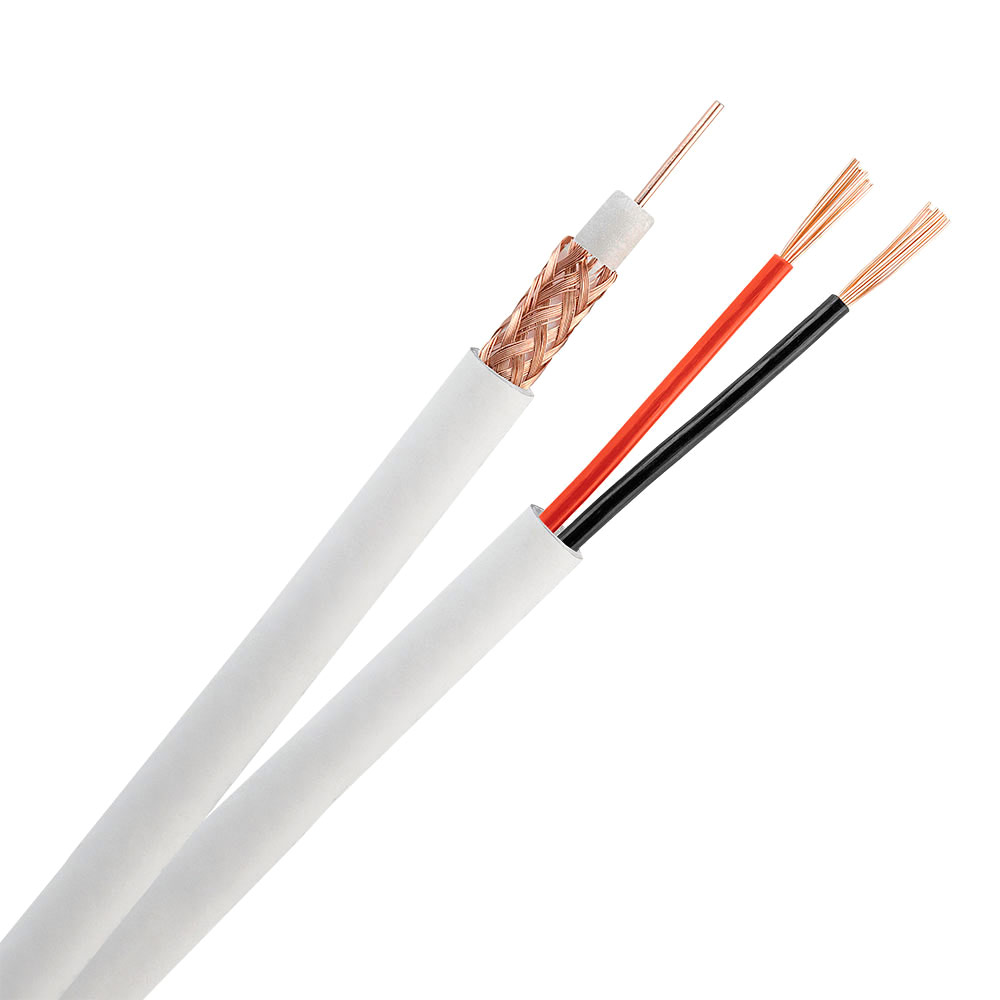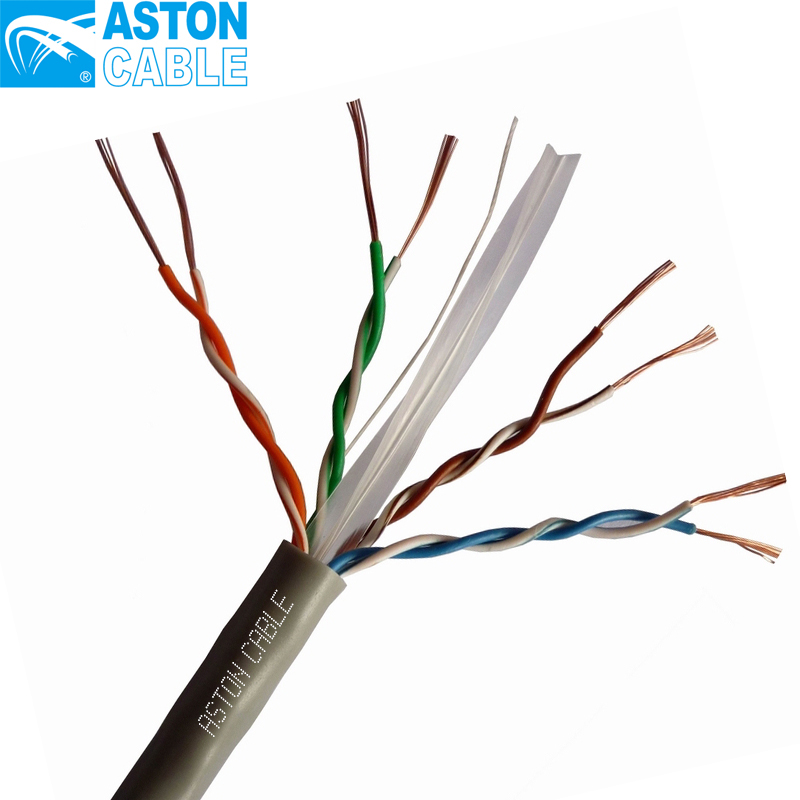Product Details
| Product Name | Patch cord CAT6/CAT5E |
|---|---|
| Jackets | PVC |
| Color | Customized |
| Connectors | RJ45 |
| Material | Copper / CCA |
| Logo | OEM |
| Industrial Use | Link and extend |
| Origin | Hangzhou Zhejiang |
| Connector Type | 8P8C RJ45 |
| Cable Type | UTP FTP SFTP CAT5E CAT6 |
| Length | 0.5m/1.0m/1.5m/3.0m/5.0m/10.0m |
Product Specifications
| Cable Type | CAT6 Unshielded (UTP) |
|---|---|
| AWG | 24AWG / 26AWG |
| Daily Output | 200KM |
| Compliance | SGS CE ROHS ISO9001 |
| MOQ | 2000 PCS |
Product Manufacturing Process
The manufacturing process of CAT6 network cables involves several key steps to ensure high performance and durability. Initially, high-quality copper or Copper Clad Aluminum (CCA) is drawn and annealed to achieve the desired wire gauge. The wires are then twisted into pairs to minimize crosstalk and electromagnetic interference. A spline may be added for additional separation and performance enhancement. The twisted pairs are then sheathed in PVC material to provide insulation and protection against physical damage. During production, the cables undergo strict quality control tests, including attenuation, crosstalk, and return loss measurements, to ensure compliance with industry standards such as TIA/EIA-568-B. Finally, RJ45 connectors are attached and the completed cables are thoroughly tested for continuity and performance.
Product Application Scenarios
CAT6 network cables are widely used in various environments to support high-speed data transmission and reliable network performance. In residential settings, these cables are essential for creating home networks that connect computers, smart TVs, gaming consoles, and other devices to the internet. In commercial offices, CAT6 cables link workstations, servers, and network hardware, facilitating efficient data transfer and communication. Data centers utilize CAT6 cabling to interconnect racks of servers and networking equipment, ensuring high bandwidth and low latency for mission-critical applications. Additionally, CAT6 cables are deployed in CCTV systems to connect security cameras and DVRs, providing both power and data transmission in Power over Ethernet (PoE) setups. Due to their robustness and high performance, CAT6 cables are ideal for future-proofing new installations and supporting advanced applications like 10 Gigabit Ethernet over shorter distances.
Product After-sales Service
Our after-sales service includes a warranty period, during which we provide repair or replacement for any defective products. Technical support is available to address any installation or performance issues. Customer satisfaction is our priority, and we offer hassle-free returns and exchanges under our return policy.
Product Transportation
Products are securely packaged to prevent damage during transportation. We offer various shipping options, including air and sea freight, with tracking available for all shipments. Delivery times depend on the destination and chosen shipping method.
Product Advantages
- High data transfer rates up to 1 Gbps over 100 meters and 10 Gbps over shorter distances.
- Enhanced design with reduced crosstalk and higher frequency handling up to 250 MHz.
- Backward compatibility with Cat5 and Cat5e cables, allowing integration into existing networks.
- Available in both shielded and unshielded varieties to suit different environments.
- Durable construction with high-quality copper or CCA materials and PVC jackets.
- Wide range of lengths and colors to meet specific installation requirements.
- OEM customization available for branding and specific needs.
Product FAQ
1. What is the maximum data transfer rate of CAT6 cables?
CAT6 cables support data transfer rates up to 1 Gbps over a distance of 100 meters and can support 10 Gbps speeds over shorter distances (up to 55 meters).
2. Are CAT6 cables backward compatible with older standards?
Yes, CAT6 cables are backward compatible with CAT5 and CAT5e standards, allowing integration into existing network infrastructures without requiring a complete overhaul.
3. What is the difference between shielded (STP) and unshielded (UTP) CAT6 cables?
Shielded CAT6 cables include an additional layer of protection against electromagnetic interference (EMI) and are often used in industrial settings or environments with high EMI. Unshielded cables are more common in typical office or home network installations where EMI is less of a concern.
4. What lengths are available for CAT6 patch cords?
CAT6 patch cords are available in various lengths, including 0.5m, 1.0m, 1.5m, 3.0m, 5.0m, and 10.0m, to meet different installation requirements.
5. What materials are used in the construction of CAT6 cables?
CAT6 cables are typically constructed using high-quality copper or Copper Clad Aluminum (CCA) materials for the internal wires, with PVC jackets for insulation and protection.
6. What applications are CAT6 cables suitable for?
CAT6 cables are suitable for various applications, including residential home networks, commercial office environments, data centers, and CCTV systems. They are ideal for high-speed data transmission and reliable network performance.
7. Can CAT6 cables be used for Power over Ethernet (PoE) applications?
Yes, CAT6 cables can be used for Power over Ethernet (PoE) applications, allowing devices such as IP cameras, wireless access points, and VoIP phones to receive power and data over the same cable.
8. Are there any specific installation guidelines for CAT6 cables?
Proper installation is crucial for achieving maximum performance. This includes maintaining the proper bend radius, avoiding excessive untwisting of the pairs, and ensuring correct termination. Professional installation helps avoid common issues like crosstalk and signal loss.
9. What are the key benefits of using CAT6 cables over CAT5e cables?
CAT6 cables offer higher data transfer rates, reduced crosstalk, and the ability to handle higher frequencies up to 250 MHz. While they come at a slightly higher cost, their performance benefits often outweigh the additional expense for many applications.
10. What future cable standards should I be aware of?
Newer standards such as CAT6a and CAT7 offer even higher performance. CAT6a supports 10 Gbps over the full 100-meter distance and higher frequencies up to 500 MHz. CAT7 supports frequencies up to 600 MHz and further reduces crosstalk and system noise. These enhanced cables come at a higher cost but are ideal for future-proofing advanced installations.
Product Hot Topics
Why Choose Wholesale CAT6 Network Cable from Aston Cable?
Choosing wholesale CAT6 network cable from Aston Cable is a smart decision for several reasons. First, our cables are manufactured to the highest standards, ensuring top-notch performance and reliability for all your networking needs. With over 20 years of experience in the industry, we understand the importance of quality and consistency. Our advanced manufacturing process and rigorous quality control measures ensure that every cable meets industry standards, including TIA/EIA-568-B. By purchasing in wholesale, you benefit from cost savings while maintaining access to premium products. Additionally, our cables are available in various lengths and colors, providing the flexibility to suit any installation. Whether you’re setting up a home network, outfitting a commercial office, or installing a data center, our CAT6 cables offer the performance you need. Trust Aston Cable for your wholesale CAT6 network cable needs and experience the difference in quality and service.
The Importance of High-Quality CAT6 Network Cables in Modern Networks
High-quality CAT6 network cables play a crucial role in modern networks, ensuring reliable and efficient data transmission. As businesses and homes become increasingly connected, the demand for high-speed, stable networks continues to grow. CAT6 cables, with their increased bandwidth and reduced crosstalk, are essential for supporting applications such as Gigabit Ethernet, video streaming, and data-intensive tasks. Poor quality cables can lead to signal degradation, data loss, and network downtime, which can have significant repercussions, especially in commercial settings. Investing in high-quality CAT6 network cables, like those offered wholesale by Aston Cable, ensures that your network infrastructure remains robust and future-proof. These cables are also backward compatible with older standards, making them a versatile choice for network upgrades and new installations. By prioritizing quality in your network cabling, you are laying a solid foundation for reliable network performance, enhanced productivity, and seamless connectivity.
Cable Installation Best Practices for Optimizing Performance
Proper installation of CAT6 network cables is critical for optimizing performance and ensuring long-term reliability. One of the key best practices is to maintain the proper bend radius of the cables to prevent physical damage and signal degradation. Avoiding excessive untwisting of the wire pairs is also essential, as it can lead to increased crosstalk and reduced performance. When running cables through conduits or along pathways, ensure they are adequately secured but not overly compressed, as this can affect their structural integrity. It is also important to keep cables away from electrical sources and equipment that may cause electromagnetic interference (EMI). Utilizing appropriate shielding, such as STP or FTP cables, can help mitigate EMI in environments where it is a concern. Additionally, ensuring correct termination and testing each connection for continuity and performance will help identify and address any potential issues before they affect the network. By adhering to these best practices, you can maximize the performance and longevity of your wholesale CAT6 network cable installations.
The Future of Networking: Embracing Advanced Cabling Standards
The future of networking is leaning towards embracing advanced cabling standards, with a focus on higher performance and greater efficiency. While CAT6 cables are currently widespread and highly effective for various applications, newer standards like CAT6a and CAT7 are gaining traction. CAT6a offers enhanced performance, supporting 10 Gbps data transfer rates over the full 100-meter distance and handling frequencies up to 500 MHz. On the other hand, CAT7 cables push the boundaries further, supporting frequencies up to 600 MHz and offering even greater resistance to crosstalk and system noise. These advanced standards are particularly beneficial for data centers, enterprise networks, and environments requiring high bandwidth and low latency. As technology continues to evolve, it is crucial for businesses and network installers to stay informed about these advancements and consider future-proofing their infrastructure by adopting these newer standards. By doing so, they can ensure their networks remain robust, scalable, and capable of supporting emerging technologies and applications.
Comparing CAT5e and CAT6: Which is Right for Your Network?
When deciding between CAT5e and CAT6 cables for your network, it is essential to consider the specific requirements and future needs of your setup. Both types of cables have their advantages and are suitable for different scenarios. CAT5e, an enhanced version of CAT5, supports data transfer rates up to 1 Gbps and frequencies up to 100 MHz, making it a cost-effective choice for most home and office networks with moderate data demands. On the other hand, CAT6 cables offer significantly improved performance, with higher bandwidth, reduced crosstalk, and the ability to handle frequencies up to 250 MHz. This makes CAT6 ideal for environments requiring higher data transfer rates, such as data centers, offices with heavy network traffic, and advanced home networks with multiple connected devices. Additionally, CAT6 cables are more future-proof, supporting applications like Gigabit Ethernet and 10 Gigabit Ethernet over shorter distances. By evaluating your current network needs and considering potential future upgrades, you can make an informed decision on whether CAT5e or CAT6 cables are the right choice for your wholesale network cabling needs.
Implementing Power over Ethernet (PoE) with CAT6 Cables
Implementing Power over Ethernet (PoE) with CAT6 cables offers several advantages, streamlining network infrastructure by delivering both power and data over a single cable. This is particularly beneficial for devices such as IP cameras, wireless access points, VoIP phones, and other network-enabled devices that require power but are located away from traditional power sources. CAT6 cables are well-suited for PoE applications due to their enhanced performance and ability to handle higher frequencies and data rates. Furthermore, the robust construction of CAT6 cables ensures reliable power delivery and minimizes signal degradation. When deploying PoE with CAT6 cables, it is essential to follow best practices for installation, including ensuring proper termination, maintaining the appropriate bend radius, and avoiding excessive untwisting of the wire pairs. Additionally, using quality PoE switches and injectors will help optimize performance and ensure the safe delivery of power to connected devices. By leveraging the capabilities of CAT6 cables for PoE, you can create a more efficient and streamlined network infrastructure, reducing the need for additional power outlets and simplifying cable management.
Understanding the Role of Spline in CAT6 Cables
The spline, a longitudinal separator found in many CAT6 cables, plays a crucial role in enhancing cable performance by reducing crosstalk and improving structural integrity. Crosstalk, which is the interference between the wire pairs within the cable, can significantly degrade signal quality and data transmission rates. The spline helps to separate the wire pairs and maintain their twist consistency, effectively mitigating crosstalk and allowing the cable to handle higher frequencies, up to 250 MHz. Additionally, the spline adds rigidity to the cable, making it more robust and resistant to damage from bending or pulling during installation. While the inclusion of a spline may slightly increase the cost of CAT6 cables, the benefits in terms of improved performance and reduced signal loss often outweigh the additional expense. Understanding the role of the spline can help you make informed decisions when selecting wholesale CAT6 network cables for your installations, ensuring you achieve the best possible performance and reliability.
Cost-Benefit Analysis of Upgrading to CAT6 Cabling
Conducting a cost-benefit analysis of upgrading to CAT6 cabling can help organizations and individuals determine if the investment is worthwhile for their specific needs. While CAT6 cables are generally more expensive than older CAT5e cables, the performance benefits they offer can justify the higher cost. CAT6 cables support higher data transfer rates, up to 1 Gbps over 100 meters and 10 Gbps over shorter distances, making them ideal for applications requiring high bandwidth and low latency. They also handle higher frequencies, up to 250 MHz, ensuring better signal quality and reduced crosstalk. These advantages are particularly important in environments with heavy network traffic, such as data centers, corporate offices, and advanced home networks. Additionally, CAT6 cables are more future-proof, providing the infrastructure needed to support emerging technologies and applications. When considering the long-term benefits of improved network performance, reliability, and scalability, the initial investment in upgrading to wholesale CAT6 network cables can result in significant cost savings and efficiency gains over time.
Image Description













